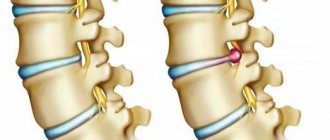As important as diet and strength training are to getting in perfect physical shape, you need to add one more factor to this recipe: metabolic training. They increase the efficiency of the body's three energy systems:
- creatine phosphate
- glycolytic
- aerobic
When performing physical exercises, you use all three systems in different proportions each time, but which of them will be dominant depends on the type of load. For example, weightlifting primarily uses the creatine phosphate system, while long-distance jogging primarily uses the aerobic system. In general, we can say that the creatine phosphate energy system is used where a maximum load at the limit of capabilities is required, not exceeding 10 seconds in duration. After this time, the body's energy needs force it to switch to the glycolytic system. And after a few minutes, the main share of energy begins to come from the aerobic system. Let me repeat again: during any physical activity, energy comes from all three energy systems, but there are specific types of training that allow you to specifically focus on one of them.
High Intensity Interval Training (HIIT)
The concept of metabolic training combines many methods. Long, slow cardiorespiratory bursts primarily target the aerobic system, while short, intense sprints with long rest periods in between target the creatine phosphate system more. There are quite a few good methods that use all three energy systems with a predominance of the glycolytic one. They are most suitable for getting rid of excess fat. One such method is high-intensity interval training. It can consist of sprint interval running, cycling sprint intervals, interval swimming, etc. In this type of training, periods of high-intensity activity, usually lasting 10-40 seconds, are followed by periods of low intensity, lasting 30-120 seconds. For example, one workout might consist of 10 30-second sprints followed by one-minute periods of easy jogging. The duration of each component is set individually.
One HIIT study found that a person's metabolic rate increased by 21 percent within 24 hours of exercise and by 19 percent within 48 hours. Another study showed that if you take into account the total number of calories burned aerobically during exercise and in the post-exercise period (using the effect of the so-called oxygen debt, which consists of increased oxygen consumption to oxidize waste products accumulated during exercise), and the number of calories burned anaerobically during training, it turns out that 39 kilocalories are spent on aerobic exercise lasting 3.5 minutes, and 65 kilocalories are spent on 3 15-second sprints. Thus, HIIT burns more calories even though the time spent on it is about a quarter of the time of a regular slow cardiorespiratory workout (45 seconds versus 210).
Methods to speed up metabolism
If the metabolic rate is low, it takes a long time for the absorbed carbohydrates, proteins and fats to be processed into the energy necessary for the functioning of the body. As you lose weight, your metabolic rate will decrease because your body will need fewer calories.
Research shows that you can increase your calorie burn to lose weight by using some techniques to speed up your metabolism.
Fractional meals
Eat small meals often throughout the day, and don't skip breakfast.
Increasing the time between meals causes the body to enter fasting mode. In this case, the body tends to conserve energy to prevent exhaustion and lowers the metabolic rate.
Small portions of food every 3 hours stimulate the body, causing a short-term increase in metabolic rate.
Protein products
Add lean proteins to your diet.
Eating a diet rich in lean proteins, found in eggs, chicken breast and fish, will increase your metabolic rate because protein is difficult to digest and requires more energy to break it down in the digestive tract.
A good source of slow protein is cottage cheese - eat it before bed to get your metabolism working throughout the night.
Spices
Add spices to the dishes you eat. Spices contain natural substances that boost metabolism. Chili pepper, curry, ginger, mustard and garlic will help speed up your metabolism for a while. Add them to every meal.
Cardio load
Do at least 30 minutes of aerobic exercise per day.
Cardio exercise increases your heart rate, causing increased blood circulation and increased metabolism during the workout. Use interval training for maximum effect.
Power training
Building muscle helps raise your basal metabolic rate.
Every pound of muscle mass burns 6 calories per day versus 2 calories burned by the same amount of fat. The more muscle tissue you have, the more calories your body burns, even while at rest.
Strength training to build mass is the only way to increase your metabolic rate over the long term.
Temperature
Use temperature readings to speed up your metabolism. When consuming cold water, the body is forced to heat it, which causes a temporary acceleration of metabolism. Likewise, people living in tropical climates have a faster metabolic rate because the body is forced to expend effort to cool the body.
Exercise performed in hot weather also places additional metabolic stress. The amount of energy metabolism in cold climates can be controlled by suitable clothing that does not cause the body to overheat.
Coffee
Coffee speeds up metabolism due to the caffeine it contains. Drink a cup of coffee before exercise, although the metabolic effect of caffeine is small compared to exercise.
In addition, caffeine is not safe—excessive coffee consumption can lead to nervousness, insomnia, and other unpleasant side effects.
Green tea
Drink green tea throughout the day.
Research shows that drinking a few cups of green tea along with physical activity has a greater metabolic benefit than exercise alone.
Green tea contains a complex of catechins, which exhibit antioxidant activity and help the liver convert fat into energy.
Adequate nutrition
Avoid crash diets. Severely reduced calorie diets negatively affect metabolism by slowing down the metabolic rate.
After returning to a normal diet, the body perceives the previous amount of calories as excess and stimulates weight gain.
In addition, strict diets are not balanced in terms of nutrients and vitamins, which leads to health problems.
Cellulose
Add fiber-rich foods to your diet: fresh vegetables, fruits and whole grains.
The body spends extra energy processing fiber foods, and some types of fiber are not digested at all, forcing the digestive tract to work and increasing the metabolic rate.
Fiber can be additionally consumed in the form of bran or dietary supplements.
Fat Burning Supplements
The use of sports fat-burning supplements is justified only when combined with regular training. They increase the efficiency of fat burning during strength training and add endurance to cardio training.
Without physical activity, fat burning supplements will not have an effect on your metabolic rate, but they can cause problems with the functioning of the nervous system and heart.
What is the best strength training for weight loss? What types are there and what to choose? How do both types affect weight loss while dieting?
Although many are still only interested in the number on the scale, the main goal of the diet is not weight loss, but fat loss, while maintaining muscle.
For decades, the idea that you need to change up your workouts while losing weight has been popular. You need to exercise more often, lower the working weights, increase the repetitions, and reduce the rest between sets. Such training is called “relief” training, as opposed to “mass” training.
This is how those who used anabolic steroids “dried” in the 70-80s, and this is a completely different physiological state of the body. For the average person, their techniques are a recipe for failure.
https://youtu.be/QxLCjUbsnhM
Metabolic Strength Training (MST)
Strength training is an effective form of metabolic training. One of its options - metabolic strength training - allows you to bring the process of burning fat deposits to the maximum, although with some damage to muscle building. This method is similar to HIIT because in both cases, energy consumption continues after exercise due to the oxygen debt effect.
To achieve optimal results from MCT, a number of conditions must be met:
- Training cycles should include complex exercises, during which several muscles are simultaneously worked.
- During your workout, alternate between lower and upper body exercises. This will force the heart to work harder to redistribute blood throughout the body, while at the same time allowing some muscle groups to recover while others work.
- Include exercises for the muscles of the entire body in your training programs, which significantly increase your heart rate.
- When performing the exercises, maintain a high tempo of movements in which the muscle fibers work concentrically (shortening during contraction), but slow down the movements and have full control during the eccentric phase (in which the muscle fibers lengthen under load). Both of these phases speed up metabolic processes.
- Take short rest breaks between sets and when moving from one exercise to another.
Remember that metabolic training is about activating your energy systems, not about building muscle. Their task is to burn calories and speed up metabolic processes. By combining strength training and MCT, you give your muscles the opportunity to recover after intense exercise. Do not try to overload any particular muscle group during MCT, as this may reduce its potential during subsequent strength training. This approach will not lead to increased muscle strength.
How the training goes
Therefore, a new type of training becomes the basis of a large number of fitness programs, which are becoming very popular today. One of them, created by Frank Salzone, is shown below.
The scheme is as follows: in each exercise it is necessary to perform the greatest number of repetitions in 60 seconds without rest. After completing these 10 exercises, take a breath and start doing it all over again - and so on for 3 full runs.
You need to exercise three times a week. When selecting weight-bearing objects, you need to pay attention to 2 such positions: do everything correctly, then by the end of each repetition you will feel a slight burning sensation in your muscles.
Compare this workout to TRX loop training
Reverse lunges with biceps curl and press
Stand up straight, place your feet hip-width apart, arms down, dumbbells in your hands. Step back with one leg, kneel on one knee, and lunge forward with the other leg (A).
Bend your elbows, turn your hands so that your thumbs point outward, and lift the dumbbells toward your shoulders (B).
Raise your arms up, squeezing the shells ©.
Move your arms down over your shoulders and return to the starting position. This is only one repetition.
Repeat this movement, but only on the other leg, and continue alternating legs.
Standing press
| Stand up, place your feet as in the first exercise. Press the dumbbells overhead (palms forward) (A). Slowly lower the dumbbells toward your shoulders (B). Then jerk them up, returning to the starting position. |
Skater with dumbbell
| Grab the dumbbell with both hands and jump to the right, landing in a lunge position. Knees bent, dumbbell lowered to the outside of the right leg (A). Make a quick jump, landing on the other side (B). |
T push-ups
| Do a push-up (A). As you rise, rotate to the right while raising your right arm up (B). Return to the starting position by repeating the exercise to the left side, raising your left arm. |
Projectile thrust from the prone position
| Perform a lying position with your hands on dumbbells. To maintain balance, place your feet shoulder-width apart (A). Bend your arm, bringing one round to your lower chest (B), lower down and repeat the same movement on the other side. Do not twist your hips, keep them parallel to the floor, keep your core muscles tense. |
Sumo reversals
| Take one dumbbell by the ends (with both hands), spread your legs wide, toes pointing to the sides. Maintain a bend in your lower back and move your pelvis back. Squat low and lower the dumbbell to the floor (A). Quickly stand up and raise your left knee to hip level while moving the dumbbell in a clockwise circle (B). Lower your leg, but continue to rotate the projectile until you return to the starting position (position A). The same must be done in the other direction. |
Punch
| Take dumbbells and lift them to your shoulders. Take a quick step to the right (A). Turn on your feet and move as if you were striking your opponent with your left hand (B). Return to the starting stance. Repeat the same thing, but in the other direction: step plus kick. |
Reverse crunches with leg raises
| Lying on your back, bend your legs, making two right angles. Raise the dumbbells above you - in line with your shoulders (palms facing one another) (A). The abdominal muscles are well tense. Move the dumbbells behind your head, straighten your legs, but do not touch the floor, holding them suspended for a couple of seconds (B). Return to the starting position. |
Lateral lunges + rows
| Take objects with your hands down. From a standing position, step to the right, doing a low side lunge, lowering the implements closer to the floor, with a straight back (A). Bend your arms so that your elbows are raised out to the sides and up, lift the dumbbells (B). Straighten your arms and return to the standing starting position. Repeat the same with a lunge to the left side. |
Aerobic and anaerobic exercise
So, when you exercise too intensely, your body experiences an “excess” of oxygen consumption.
This brings us to the part about the difference between aerobic and anaerobic exercise.
Aerobic exercise is usually performed in the presence of normal oxygen levels and gets you moving but does not greatly increase your heart rate.
Anaerobic exercise, on the other hand, is performed in a state of oxygen deprivation, this happens because you are training so intensely that your body needs more and more air to cope with the workout. This is how the effect of oxygen starvation occurs.
This causes the body to begin consuming excess amounts of oxygen in an attempt to recover.
This process helps boost your metabolism to a high level, hence the term “metabolic training.”
For a workout to be considered metabolic it must meet three criteria:
- Engage all parts of the body
- Run at maximum intensity level
- Cause a burning sensation, which means the production of lactic acid in muscle tissue
Important Features
It should be understood that for maximum efficiency, metabolism switches to one energy source. For example, when burning fatty fuel, compounds are produced that prevent the production of “carbohydrate” fuel, and vice versa.
Thus:
- If you eat more fatty foods, sugars are burned worse.
- If you eat more carbohydrates, fats are burned worse.
- If there is a lot of both, then neither mechanism works optimally.
Any excess in one way or another causes insulin resistance and deprives our metabolism of useful flexibility.
Weekly planning
Now you can plan your workouts for the week. Basically, you can do both types of workouts on the same day or on different days. Considering that most people try to exercise too much on a diet, when in doubt, please err on the side of “less.” It will pay off in the long run.
Much will depend on what the “heavy” strength looks like. Some people like two or three hard, short workouts for the whole body. But if it takes a lot of time, you are unlikely to be happy to do a metabolic workout after such a workout. In this case, it is better to postpone it to a separate day. Another option is to divide your workouts into upper-lower classes, and then strength training can be combined with metabolic training in one session.
Examples are in the table below. T - heavy training, M - metabolic. For no particular reason, we will assume that there are no training sessions on the weekend.
- Options 1 and 2
are for those who have time to recover from four workouts a week, and those who love full-body workouts. - Option 3
is for those who need more days to recover. - Option 4
is simply one of a million different ways to use traditional bodybuilding split training. One of the problems here is that metabolic training is usually full-body, so it does not always combine well with dividing heavy training into muscle groups. If metabolic training on Monday makes you too tired to do a heavy leg workout on Wednesday, it won't be the best option.
The table doesn't show every option, but it does show the limit of how much high-intensity work you can do in a calorie deficit. Many people, in an effort to get quick results, try to do too many things without paying attention to the overall workload or the interaction of different components in the program, and pay the price down the road.
Not every diet is good for losing hormonal weight
On the one hand, the assumption that eating fat leads to its accumulation is logical, but on the other hand, it is completely wrong. To get enough energy for exercise, daily activities and metabolic processes, you have two options - carbohydrates or fats.
Not all of us love cardio. We often try in various ways - through interval training or other means - to reduce the amount of time wasted on the treadmill. Some people drag their work to the simulator, some watch movies on an iPad, others, checking Google, practice complex programs, constantly changing the angle of inclination and speed. An excellent alternative to cardio is metabolic training. In addition, it allows you to burn fat much more effectively, as it affects metabolism.
Not all types of exercise can help you get rid of hormonal weight
Both fitness trainers and doctors talk about the benefits and importance of cardio training for health. And they are really useful. However, you will be surprised to learn that this particular type of exercise not only does not help burn fat, but also leads to increased levels of stress hormones, especially cortisol.
And metabolic strength training suppresses the weight gain hormone (cortisol). Research shows that long-term exercise does more harm than good, especially if you have diabetes, metabolic syndrome, and hypothyroidism.
Opt for metabolic training to get rid of hormonal weight faster and more effectively.
If you replace a long cardio workout with a 20-minute high-intensity metabolic workout, you can activate the 3 main fat-burning hormones and ensure the growth of metabolically active tissue.
What is needed is not a “fast”, but a flexible metabolism
To regulate weight (and improve health), we do not need lightning-fast digestion, but multitasking metabolism - so that both sugars and fats are consumed equally well. How to develop metabolic flexibility? First, let's look at the reasons why we lose it.
Top-down analysis
If we consider the violations “from top to bottom” (or “from the outside in” - from food intake), we get the following picture:
- A number of hormonal effects are associated with the amount of macronutrients consumed (and total calories).
- Too much carbohydrate (or protein, or calories in general) increases insulin production.
- When insulin levels are chronically high, the body stops responding to it (insulin resistance).
- The same insulin resistance can be caused by chronically elevated cortisol (stress).
- Developed insulin resistance prevents the burning of both sugars and fats.
- As a result, the released sugars and fats (glucose and triglycerides) travel through the blood (causing harm) or are stored in reserves (excess weight).
Many people seem to be familiar with this concept. But not everyone has tried to turn their metabolism in the opposite direction.
Bottom-up analysis
- Large amounts of energy (from different sources) enter the mitochondria at the same time.
- Mitochondria are forced to work without interruption, and over time, energy production drops.
- Even during production, by-products are formed - free radicals (hydrogen peroxide), which damage mitochondrial membranes and negatively affect DNA.
- Due to slowdown and damage to mitochondria and excess intake of carbohydrates, fatty foods and alcohol, metabolites of fats and sugars accumulate.
- Acetyl-CoA from excess fat interferes with the burning of carbohydrates.
- Acetyl-CoA from excess sugar interferes with fat burning.
- Alcohol acetyl-CoA prevents the breakdown of both fats and carbohydrates.
- Cellular functions suffer.
- Insulin receptors work worse.
- Ascending insulin resistance develops, and levels of blood sugars and fats (triglycerides) rise.
- The consequence of this is descending insulin resistance (which can later develop into diabetes - this is how it happens further in stages).
As a result, we end up with chronic fatigue and excess weight (not to mention depression and anxiety).
Rise of the Metabols
The term “metabolic training” itself has become extremely popular for one reason only. Humanity is rapidly getting fatter. And the term “metabolism” in the active vocabulary of a typical loser is somewhere in third place after the words “fat” and “calories”. Moreover, it is usually used in phrases like “I have a very slow and lazy metabolism,” “I have hormonal disorders and a slow metabolism.” From a physiological point of view, the difference between “fast” and “slow” metabolism is not that great. Some 2 servings of dessert or a couple of sandwiches with boiled pork and cheese. So “metabolism” in the name of the workout is nothing more than a good move to attract the attention of those losing weight.
Allegedly, a person is offered a magic stick to cure all metabolic problems. Enough 3 times a week is like group training X, or try out the exercise machines arranged in a circle in the women's fitness club Y.
In reality, the scientific studies mentioned in the previous post have shown that metabolism accelerates by the notorious 100 kcal or less, but not by the “dramatic” 400-500 kcal. So the M word can be safely ignored.










